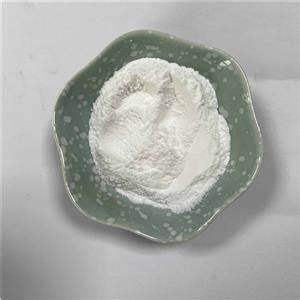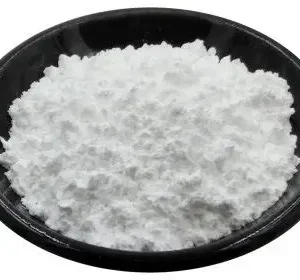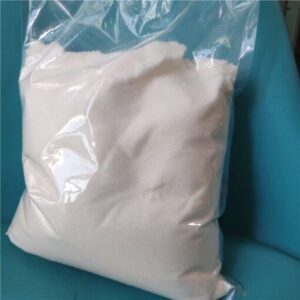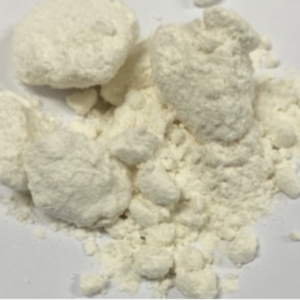Buy 4-Piperidone Cas 41661-47-6
Buy 4-Piperidone Cas 41661-47-6
4-Piperidone is an organic compound with the molecular formula OC(CH2)4NH. It can be viewed as a derivative of piperidine. 4-Piperidone is used as an intermediate in the manufacture of chemicals and pharmaceutical drugs. Substituted and dehydro derivatives of 4-piperidinone are intermediates in alkaloid syntheses.[1]
The N-protonated derivative is typically isolated as the hydrate (HO)2C(CH2)4NH+2.[2]
It is a List I chemical in the United States as it is a precursor to fentanyl.
4-Piperidone
Description
Crystallographic Analysis of this compound Derivatives
Crystallographic investigations of various this compound derivatives have provided detailed insights into their solid-state structures and packing arrangements. The crystal structure analysis of 1-[(1R)-2-hydroxy-1-phenylethyl]piperidin-4-one reveals a monoclinic crystal system with space group P2₁, where the compound adopts a chair conformation with specific puckering parameters. The total puckering amplitude reaches Q = 0.553(3) Å, with Cremer parameters θ = 168.8(3)° and φ = 171.8(18)°, indicating a slight deviation from the ideal chair conformation due to the heterocyclic nature of the ring. Buy 4-Piperidone Cas 41661-47-6
Comparative crystallographic data for several this compound derivatives demonstrates the influence of substituents on crystal packing and molecular geometry. The compound 3-chloro-3-methyl-r-2,c-6-diphenylpiperidin-4-one crystallizes in the triclinic space group P1̄, while related derivatives with different substitution patterns adopt orthorhombic space group Pna2₁. These structural variations highlight the sensitivity of crystal formation to molecular substitution patterns.
| Compound | Space Group | a (Å) | b (Å) | c (Å) | β (°) | Volume (ų) | Reference |
|---|---|---|---|---|---|---|---|
| 1-[(1R)-2-hydroxy-1-phenylethyl]piperidin-4-one | P2₁ | 9.759 | 6.895 | 9.798 | 114.35 | 600.67 | |
| 8-[(1S)-1-phenylethyl]-1,4-dioxa-8-azaspiro[4.5]decane-7-thione | P2₁2₁2₁ | 5.973 | 14.948 | 16.127 | 90 | 1439.9 | |
| 3-chloro-3-methyl-r-2,c-6-diphenylpiperidin-4-one | P1̄ | –Buy 4-Piperidone Cas 41661-47-6 | – | – | – | – |
The crystallographic analysis reveals that weak intermolecular interactions play significant roles in crystal stability. Hydrogen bonding patterns, particularly C-H⋯O interactions, create supramolecular chains that propagate along specific crystallographic directions. These interactions contribute to the overall stability of the crystal lattice and influence the observed conformational preferences in the solid state.
Conformational Dynamics in Piperidin-4-one Ring Systems
The conformational behavior of piperidin-4-one ring systems exhibits remarkable complexity, with multiple stable conformers accessible depending on substitution patterns and environmental factors. Systematic analysis of various derivatives has established that the hybridization state of the carbon atom alpha to the piperidinic nitrogen atom serves as a primary determinant of conformational preference. When this carbon adopts sp³ hybridization, the ring strongly favors chair conformations, whereas sp² hybridization promotes distortion toward half-chair arrangements. Buy 4-Piperidone Cas 41661-47-6, Buy 4-Piperidone Cas 41661-47-6, Buy 4-Piperidone Cas 41661-47-6, Buy 4-Piperidone Cas 41661-47-6, Buy 4-Piperidone Cas 41661-47-6, Buy 4-Piperidone Cas 41661-47-6, Buy 4-Piperidone Cas 41661-47-6, Buy 4-Piperidone Cas 41661-47-6, Buy 4-Piperidone Cas 41661-47-6, Buy 4-Piperidone Cas 41661-47-6, Buy 4-Piperidone Cas 41661-47-6, Buy 4-Piperidone Cas 41661-47-6, Buy 4-Piperidone Cas 41661-47-6, Buy 4-Piperidone Cas 41661-47-6, Buy 4-Piperidone Cas 41661-47-6
Detailed conformational analysis of this compound derivatives reveals specific geometric parameters that characterize different conformational states. The chair conformation observed in many N-substituted derivatives exhibits puckering amplitudes ranging from 0.553 to 0.568 Å, with theta angles typically between 167° and 174°. These values demonstrate consistent structural features across different substituent patterns while revealing subtle variations that reflect electronic and steric influences.
| Compound Type | Conformation | Q (Å) | θ (°) | φ (°) | Reference |
|---|---|---|---|---|---|
| 3-chloro-3-methyl-r-2,c-6-diphenylpiperidin-4-one | Distorted Chair | 0.559 | 173.3 | 180 | |
| 3-chloro-3-methyl-r-2,c-6-di-p-tolylpiperidin-4-one | Distorted Chair | 0.568 | 168.5 | 156.9 | |
| 3-chloro-3-methyl-r-2,c-6-di(4-chlorophenyl)piperidin-4-one | Distorted Chair | 0.557 | 167.8 | 206.8 |
The conformational dynamics become particularly complex in substituted derivatives where steric interactions between substituents influence ring puckering. Analysis of 2,6-disubstituted derivatives shows that aryl groups at these positions can adopt either axial or equatorial orientations, with the specific arrangement depending on the overall energy minimization of the system. The methyl substituents at position 3 consistently adopt syn-periplanar orientations relative to the carbonyl group, as evidenced by torsion angles ranging from -7.4° to 8.6°.
Computational studies using density functional theory have provided additional insights into conformational preferences and energy barriers between different conformers. These calculations reveal that the energy differences between chair and boat conformations typically range from 10-20 kJ/mol, with the chair form being consistently more stable. The conformational flexibility becomes particularly important in understanding the reactivity patterns of these compounds, as different conformers may exhibit distinct chemical behaviors.
Electronic Structure and Orbital Interactions
The electronic structure of this compound and its derivatives has been extensively investigated through computational methods, revealing complex orbital interactions that influence both molecular stability and chemical reactivity. Frontier molecular orbital analysis using density functional theory calculations provides detailed information about highest occupied molecular orbital and lowest unoccupied molecular orbital energy levels, which serve as crucial indicators of chemical behavior.
Computational analysis of 2,6-bis(3,4-dihydroxyphenyl)-3-phenethylpiperidin-4-one demonstrates a frontier molecular orbital energy gap of 4.6880 electron volts, indicating considerable molecular stability. The highest occupied molecular orbital is typically localized on the piperidone ring and associated π-systems, while the lowest unoccupied molecular orbital extends across the entire molecular framework, including aromatic substituents.
| Compound | HOMO Energy (eV) | LUMO Energy (eV) | Energy Gap (eV) | Reference |
|---|---|---|---|---|
| 2,6-bis(3,4-dihydroxyphenyl)-3-phenethylpiperidin-4-one | – | – | 4.6880 | |
| N-methyl substituted derivatives | Variable | Variable | ~4.5-5.2 | |
| N-benzyl substituted derivatives | Variable | Variable | ~4.3-4.9 |
Natural bond orbital analysis reveals significant stabilizing interactions through hyperconjugative effects, particularly involving the nitrogen lone pair and adjacent carbon-carbon bonds. These interactions contribute substantially to the overall molecular stability and influence the preferred conformational arrangements. The analysis demonstrates that electron delocalization patterns vary considerably depending on the nature and position of substituents, with electron-donating groups generally increasing highest occupied molecular orbital energy levels while electron-withdrawing groups lower lowest unoccupied molecular orbital energies.
Molecular electrostatic potential mapping provides valuable insights into the distribution of electron density across the molecular surface, identifying nucleophilic and electrophilic sites that determine reactivity patterns. These calculations reveal that the carbonyl oxygen consistently represents the most electronegative region, while carbon atoms adjacent to the nitrogen exhibit partial positive character. The electrostatic potential distribution becomes particularly complex in highly substituted derivatives, where multiple aromatic rings contribute to the overall electronic landscape.
Properties
IUPAC Name |
piperidin-4-one | |
|---|---|---|
InChI |
InChI=1S/C5H9NO/c7-5-1-3-6-4-2-5/h6H,1-4H2 | |
InChI Key |
VRJHQPZVIGNGMX-UHFFFAOYSA-N | |
Canonical SMILES |
C1CNCCC1=O | |
Molecular Formula |
C5H9NO | |
DSSTOX Substance ID |
DTXSID50194488 | |
Molecular Weight |
99.13 g/mol | |
CAS No. |
41661-47-6 |
Mechanism of Action
Target of Action
Piperidin-4-one, also known as 4-Piperidone or 4-Piperidinone, is an organic compound that plays a significant role in the pharmaceutical industry. It is a key intermediate in the synthesis of various pharmaceutical drugs.
Mode of Action
It is known that piperidine derivatives can interact with various biological targets, leading to a wide range of effects. For instance, some piperidine derivatives have been reported to inhibit fungal ergosterol biosynthesis, which is crucial for maintaining the permeability and fluidity of fungal cell membranes.
Biochemical Pathways
Piperidin-4-one and its derivatives can affect various biochemical pathways. For example, some piperidine derivatives have been found to exhibit antiproliferative and antimetastatic effects on various types of cancers, both in vitro and in vivo. These effects could be attributed to the compound’s interaction with multiple biochemical pathways involved in cell proliferation and metastasis.
Pharmacokinetics
Result of Action
The molecular and cellular effects of Piperidin-4-one’s action depend on the specific targets and pathways it interacts with. For instance, piperidine derivatives have been reported to possess various pharmacological activities, including anticancer and anti-HIV activities. These effects are likely the result of the compound’s interaction with specific molecular targets and biochemical pathways.
Action Environment
The action, efficacy, and stability of Piperidin-4-one can be influenced by various environmental factors. For example, the pH of the environment can affect the compound’s stability and its interactions with its targets
Biochemical Analysis
Biochemical Properties
4-Piperidone plays a significant role in biochemical reactions, particularly in the synthesis of alkaloids and other complex organic molecules . It interacts with various enzymes and proteins, facilitating the formation of intermediate compounds that are crucial in the synthesis of pharmaceuticals. For instance, this compound is involved in the synthesis of fentanyl, a potent opioid analgesic . The interactions between this compound and enzymes such as cytochrome P450 are essential for its metabolic processing .
Cellular Effects
This compound exhibits notable effects on various cell types and cellular processes. It has been observed to induce apoptosis and antiproliferative effects on human cancer cell lines, including prostate and lymphoma cancer cells . The compound influences cell function by altering cell signaling pathways, gene expression, and cellular metabolism. Specifically, this compound induces reactive oxygen species accumulation, mitochondrial depolarization, and activation of caspase-3/7, leading to cell death via the intrinsic apoptotic pathway .
Molecular Mechanism
The molecular mechanism of this compound involves its interaction with biomolecules, leading to enzyme inhibition or activation and changes in gene expression. This compound binds to specific enzymes, such as cytochrome P450, facilitating its metabolic processing . The compound’s ability to induce apoptosis in cancer cells is attributed to its role as a proteasome inhibitor, increasing the levels of poly-ubiquitinated proteins and causing cell cycle alterations .
Temporal Effects in Laboratory Settings
In laboratory settings, the effects of this compound change over time. The compound’s stability and degradation are crucial factors influencing its long-term effects on cellular function. Studies have shown that this compound remains stable under specific conditions, but its degradation products can also exhibit biological activity . Long-term exposure to this compound in in vitro and in vivo studies has demonstrated sustained antiproliferative effects on cancer cells .
Dosage Effects in Animal Models
The effects of this compound vary with different dosages in animal models. At lower doses, the compound exhibits therapeutic effects, such as reducing tumor growth and inducing apoptosis in cancer cells . At higher doses, this compound can cause toxic or adverse effects, including hepatotoxicity and nephrotoxicity . The threshold effects observed in these studies highlight the importance of dosage optimization for therapeutic applications.
Metabolic Pathways
This compound is involved in several metabolic pathways, primarily mediated by cytochrome P450 enzymes . The compound undergoes ring contraction and other transformations, leading to the formation of various metabolites. These metabolic processes are essential for the compound’s pharmacokinetics and pharmacodynamics, influencing its therapeutic efficacy and safety profile .
Transport and Distribution
Within cells and tissues, this compound is transported and distributed through interactions with specific transporters and binding proteins . These interactions affect the compound’s localization and accumulation, influencing its biological activity. The transport mechanisms ensure that this compound reaches its target sites, facilitating its therapeutic effects .
Subcellular Localization
The subcellular localization of this compound is crucial for its activity and function. The compound is directed to specific compartments or organelles through targeting signals and post-translational modifications . These localization mechanisms ensure that this compound exerts its effects at the desired sites within the cell, enhancing its therapeutic potential .
Biological Activity
4-Piperidone, also known as piperidin-4-one, is a cyclic compound that exhibits a range of biological activities, making it a subject of interest in medicinal chemistry and pharmacology. This article delves into the various biological activities associated with this compound and its derivatives, supported by recent research findings and case studies.
Overview of this compound
This compound is characterized by its piperidine ring with a ketone functional group at the fourth position. This structural feature allows for diverse chemical modifications, leading to compounds with enhanced biological properties. The compound has been investigated for its potential applications in treating various diseases, particularly cancer and inflammatory conditions.
1. Antitumor Activity
Numerous studies have highlighted the antitumor properties of this compound derivatives. For instance, a series of Boc-piperidone chalcones demonstrated significant cytotoxicity against human colorectal and prostate cancer cell lines, with GI50 values ranging from 0.84 to 34.7 μg/mL . The mechanism of action appears to involve the induction of apoptosis and inhibition of NFκB activity, which are crucial pathways in cancer cell proliferation.
Table 1: Cytotoxic Activity of this compound Derivatives
| Compound | Cell Line | GI50 (μg/mL) | Mechanism of Action |
|---|---|---|---|
| Boc-piperidone chalcone | LoVo | 0.84 | Induces apoptosis |
| Boc-piperidone chalcone | PC3 | 17.1 | Inhibits NFκB activity |
| 3,5-bis(2-fluorobenzylidene)-4-piperidone | Pancreatic Cancer | Not specified | Inhibits Notch signaling |
2. Anti-inflammatory Properties
Research indicates that certain derivatives of this compound possess anti-inflammatory effects. For example, compounds synthesized from this compound exhibited inhibition of pro-inflammatory cytokines IL-6 and TNF-α in RAW264.7 cells . This suggests their potential utility in treating inflammatory diseases.
3. Antioxidant Activity
Some studies have reported that this compound derivatives exhibit antioxidant properties, which could be beneficial in combating oxidative stress-related diseases . These compounds showed effectiveness against various free radicals, indicating their potential role as therapeutic agents.
Case Study: Piperidin-4-one Derivatives in Cancer Research
A study conducted by Cheng et al. (2011) explored the enzymatic characteristics of various piperidin-4-one derivatives, particularly focusing on their selective inhibition of coactivator-associated arginine methyltransferase 1 (CARM1). This enzyme is implicated in hormone-dependent tumors such as breast and prostate cancer. The results indicated that these derivatives could serve as promising candidates for targeted cancer therapies due to their selective action against CARM1 .
Case Study: Antiproliferative Effects on Liver Cancer Cells
Another investigation assessed the antiproliferative effects of synthesized piperidin-4-one derivatives on liver cancer cell lines (HepG2, SMMC-7721). The study found that these compounds not only inhibited cell growth but also induced apoptosis, suggesting their potential as effective treatments for hepatic malignancies .
Scientific Research Applications
Anticancer Applications
4-Piperidone derivatives have been extensively studied for their anticancer properties. Several synthesized compounds exhibit potent cytotoxic effects against various cancer cell lines.
Synthesis of Anticancer Agents
- 3,5-Bis(arylidene)-4-piperidones : These compounds have shown promising antiproliferative properties against several cancer cell lines, including colon (HCT116), breast (MCF7), and skin (A431) cancers. The mechanism of action involves the inhibition of topoisomerase IIα, an enzyme crucial for DNA replication and repair. Notably, some derivatives displayed higher efficacy than 5-fluorouracil, a standard chemotherapy agent .
- Dimeric 4-Piperidones : Novel dimeric compounds have been synthesized that demonstrate significant cytotoxicity against colon cancer cell lines (HCT116 and HT29), with IC50 values in the low micromolar range. These compounds induce apoptosis in cancer cells, further establishing their potential as effective anticancer drugs .
Case Studies
- A study on 3,5-bis(2,4-difluorobenzylidene)-4-piperidone (DiFiD) revealed its ability to inhibit tumor growth in pancreatic cancer models by affecting Notch signaling pathways, which are critical for tumor progression and angiogenesis .
- Another investigation demonstrated that conjugates of 3,5-bis(arylidene)-4-piperidone with sesquiterpene lactones significantly reduced glycolytic metabolism in cervical carcinoma cells, indicating a novel mechanism for tumor suppression .
Anti-inflammatory Properties
This compound derivatives also exhibit anti-inflammatory activities. Certain synthesized agents have been shown to inhibit pro-inflammatory cytokines such as IL-6 and TNF-α in vitro.
Pharmaceutical Intermediate
This compound serves as an important intermediate in the synthesis of various pharmaceutical compounds. Its derivatives are widely used in pain management and treatment of hypertension.
Synthesis Techniques
The synthesis of N-substituted 4-piperidones involves several methods:
- Direct alkylation reactions.
- Condensation with dibasic acid esters.
These methods aim to produce high yields while maintaining cost-effectiveness .
Research indicates that this compound derivatives possess a range of biological activities beyond anticancer properties.
Antiviral Activity
Carbohydrate derivatives of piperidin-4-one have shown potential antiviral activity against viruses like cytomegalovirus and SARS-CoV-2, suggesting their utility in developing antiviral therapeutics .
Antioxidant Properties
Studies have indicated that certain piperidin-4-one derivatives exhibit antioxidant activity, which may contribute to their therapeutic effects across various biological systems .
Data Tables
| Application Area | Compound Type | Key Findings |
|---|---|---|
| Anticancer | 3,5-Bis(arylidene)-4-piperidones | Potent against HCT116, MCF7; higher efficacy than 5-FU |
| Anti-inflammatory | COX inhibitors | Enhanced COX-2 selectivity compared to aspirin |
| Pharmaceutical Intermediate | N-substituted 4-piperidones | Used in pain management and hypertension treatments |
| Antiviral | Carbohydrate derivatives | Effective against cytomegalovirus and SARS-CoV-2 |
| Antioxidant | Various derivatives | Significant antioxidant activity noted |
Q & A
Q. Checklist for Reproducibility :
Specify reagent grades (e.g., anhydrous solvents).
Include reaction monitoring (TLC/Raman tracking).
Provide troubleshooting notes for common side reactions (e.g., overhydrogenation).
Advanced: How do N-substituent modifications influence this compound’s bioactivity?
Methodological Answer:
- Electron-withdrawing groups : Sulfonyl or trifluoromethyl substitutions enhance cytotoxicity by increasing electrophilicity and membrane permeability .
- Bulkier substituents : Arylidene groups at the 3,5-positions improve intercalation with DNA or enzyme active sites, as shown in molecular docking studies .
- Validation techniques :
- SAR analysis : Use IC₅₀ values from MTT assays to correlate substituent size/charge with activity .
- Fluorescence tagging : Track cellular uptake of fluorescent derivatives (e.g., benzofuran conjugates) via confocal microscopy .
Data Insight : N-acyl-3,5-bis(benzylidene)-4-piperidone derivatives exhibited 10-fold selectivity for squamous cell carcinomas over non-malignant cells .





Reviews
There are no reviews yet.